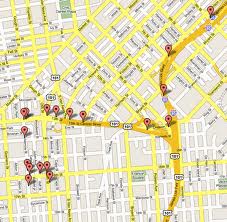By RyanKamauff
 Note, this article is reposted from Terracotta’s blog (here).
Note, this article is reposted from Terracotta’s blog (here).
If you’re an IT exec in logistics, travel, or transportation, mapping is certain to appear on your list of top challenges for 2013. Maps pose a challenge because they require large data sets, real-time processing, and fast display. CIOs working with maps must grapple with all four of big data’s V’s: volume, velocity, variety, and value.
More and more travel and logistics CIOs are adopting a game-changing approach to mapping by moving as much of their map and geolocation data into RAM, where it’s instantly available. Terracotta’s BigMemory, when integrated with mapping software solutions like Maptitude and ESRI, serves as an in-memory hub for a map’s raster and vector tiles—the components of map display. Even at terabyte scale, you get predictable, extremely low latency for tile management, zooming, etc. Online map users are accustomed to the frustration of waiting for a map to render; BigMemory lets you bulk-load all map tiles into memory before users request them, dramatically increasing rendering speed and radically upgrading the user experience.
A growing number of travel, logistics, and transportation companies are applying BigMemory’s in-memory capabilities to their most complex challenges. For example, a leading navigation-assistance company uses BigMemory to instantly deliver traffic updates to global customers. We’re also seeing increased traction of in-memory computing in land management (topographies and weather maps), health care (epidemic monitoring/modeling), aviation (flight control), and law enforcement (crime maps).
I’d love to hear about your mapping and other challenges and discuss how in-memory computing can help. Contact me at gagan@terracotta.org or leave a comment below.


Leave a Reply
You must be logged in to post a comment.